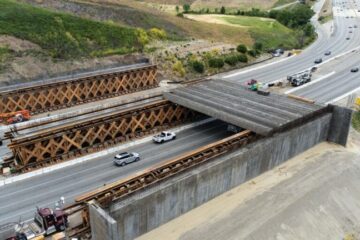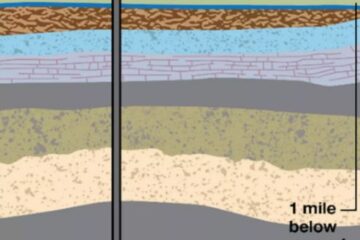Does Natural-Gas Drilling Endanger Water Supplies?
A debate is heating up over whether the fracturing technique used in natural-gas drilling could result in chemicals contaminating drinking water
Source of this article – Business Week, November 24, 2008.
Abrahm Lustgarten
Natural-gas operations are proliferating from Wyoming to New York. At the same time, Halliburton (HAL) and other gas-service giants are fighting to keep secret the potentially hazardous chemicals they use to split thick layers of rock and release the fuel beneath.

Lisa Bracken of Silt, Colo., worries about the water she draws from Divide Creek (Jamie Kripke)
Some regulators and many environmentalists worry that the fluids injected into many U.S. gas fields could be contaminating drinking water with benzene, methanol, and other toxic substances. The industry counters that its methods are safe. Drillers point to a 2004 study by the U.S. Environmental Protection Agency that supports their position, as well as a key legislative exemption from federal oversight they won in 2005.
The debate is heating up as reports of water pollution near gas drill sites accumulate and the incoming Obama team considers reversing a recent Bush Administration move to permit more drilling in Utah. A close look at the EPA’s 2004 study reveals that the agency may have played down evidence of health dangers. And now some regional EPA officials say it’s time for the industry to disclose precisely what it’s pumping into the ground.
Energy companies are taking a tough stance. Last summer, Houston-based Halliburton threatened to cease natural-gas operations in Colorado if regulators there persisted in demanding the chemical recipe used in a common drilling process known as hydraulic fracturing. Using this method, drillers shoot vast quantities of water, sand, and chemicals into the earth to break up rock and release gas. “A disclosure to members of the public of detailed information…would result in an unconstitutional taking of [Halliburton’s intellectual] property,” the company said in a filing to Colorado’s Oil & Gas Conservation Commission. The industry has adopted similar positions in New York, Wyoming, and New Mexico.
“Competitive Advantage”
Halliburton says its reluctance to release information about drilling chemicals reflects only a desire to protect valuable trade secrets. “If these formulas were to become available to other companies, it is possible that we could lose our competitive advantage with respect to those companies, not only in Colorado but throughout the world,” says Halliburton spokeswoman Diana Gabriel. Rival drillers have similar motives for their secrecy, according to the Independent Petroleum Association of America, a Washington trade group.
In Colorado, Halliburton recently reached a compromise with regulators, but it’s one that appears to favor the industry. The company agreed in August to disclose the chemicals it uses in hydraulic fracturing to state health officials and regulators, though not to the public. But the agreement applies only to chemicals stored in drums that contain 50 gallons of drilling fluid or more. As a practical matter, drilling workers in Colorado and Wyoming say in interviews that the fluids are often kept in smaller quantities. That means at least some of the ingredients still won’t have to be disclosed. Halliburton didn’t respond to questions about the Colorado compromise.
Regulators “will never get [the chemical data],” predicts Bruce Baizel, a lawyer with the Oil & Gas Accountability Project, a nonprofit in Durango, Colo. “Not unless they are willing to go through a lawsuit.” So far such a suit hasn’t been filed in Colorado—or anywhere else—since regulators have only lately sought to learn more about the effects of hydraulic fracturing.
Three companies—Halliburton, Schlumberger (SLB), and BJ Services (BJS)—control the vast majority of the $15 billion hydraulic-fracturing market. They work as subcontractors for the world’s largest natural-gas developers, including BP (BP), Shell (RDSA), Chesapeake Energy (CHK), and Chevron (CVX). The drillers have zealously refused to reveal the combinations of chemicals they use in fracturing. “It’s like Coke protecting its syrup formula for many of these service companies,” says Scott Rotruck, Chesapeake’s vice-president for corporate development. Chesapeake and its contractors are facing disclosure demands from New York state officials before they can drill in a massive Appalachian gas reserve known as the Marcellus Shale. Schlumberger and BJ Services didn’t respond to requests for comment.
Chesapeake, Halliburton, and others in the energy industry say hydraulic fracturing is entirely safe. They point to the 2004 EPA study concluding that the process was not dangerous and did not warrant further study. Fracturing fluids aren’t necessarily hazardous, can’t travel far underground, and there is “no unequivocal evidence” of a health risk, the EPA concluded.
The report’s release followed years of industry lobbying to limit study of hydraulic fracturing. After the EPA’s study, Congress in 2005 exempted hydraulic fracturing from the Safe Drinking Water Act. That effectively eliminated EPA jurisdiction over the drilling technique and left oversight to state regulators and, in the case of federally owned land, the U.S. Bureau of Land Management (BLM), an agency often characterized as friendly to industry.
“I think fracturing has been given a clean bill of health,” contends Kenneth A. Wonstolen, an attorney who represents the Colorado Oil & Gas Assn. “You have intervening rock in between the area that you are fracturing and the areas that provide water supplies. The notion that fractures are going to migrate up to those shallow formations—there is just no evidence of that happening.”
Thanks in large part to hydraulic fracturing, which is a
less expensive way to get at deep deposits, natural-gas drilling has vastly expanded across the U.S. in recent years. In 2007 there were 449,000 gas wells in 32 states, 30% more than in 2000. Domestic gas is widely viewed as one potential means to wean the nation off imported oil. Burning natural gas, which is primarily used to heat homes and make electricity, emits 23% less carbon dioxide than burning oil. Gas is the country’s second-largest domestic energy resource, after coal.
But as gas drilling has spread—and encroached on residential areas in some states—new questions are surfacing about whether the fluids used in fracturing cause water contamination. According to the Interstate Oil & Gas Compact Commission, a multistate government agency, nine out of 10 gas wells in the U.S. rely on the fracturing technique. The concern is that dangerous chemicals may escape from some well sites as a result of leaky waste pits, spills caused by worker negligence, or underground leaching.
Evidence of Contaminated Wells
Serious episodes of water contamination near drilling sites have been documented in seven states: Alabama, Colorado, Montana, New Mexico, Ohio, Texas, and Wyoming, according to public records and interviews with state and federal officials. Numerous incidents of contamination have occurred in western Colorado, where drilling has expanded swiftly. In 2004 a well casing shattered beneath a rig at Divide Creek, a tributary of the Colorado River, which supplies water to seven states. Dangerous levels of benzene turned up in groundwater and stream samples, state records show. Benzene is a carcinogen, according to the EPA, and has been linked to aplastic anemia and leukemia.

EPA’s Dhieux says the drillers’ secrecy makes it tough to vouch for the safety of the process
(Jamie Kripke)
“The gas companies tell us it’s impossible for the water to become contaminated,” says Lisa Bracken, a resident of Silt, Colo., who draws her drinking water from Divide Creek. “But it’s increasingly common.…We have no idea what to protect ourselves from.”
In June a rancher in Parachute, Colo., was hospitalized after he drank well water from his tap. Tests showed benzene in his water. The Colorado Oil & Gas Conservation Commission blamed four gas operators in the area for spilling waste fluids. An investigation is continuing.
Pointing to such episodes, several experts in the EPA’s regional office in Denver have begun to raise questions about the agency’s conclusion in its 2004 report that hydraulic fracturing is safe. “We’ve kind of reached the tipping point where the impacts are there,” says Joyel Dhieux, an EPA scientist in Denver who reviews the effects of industrial projects.
In rural Sublette County, Wyo., an area the size of Connecticut with two mountain ranges but no stoplights, recent testing by federal and state officials near one of the nation’s largest gas fields found 88 contaminated water wells stretching over 28 miles. Fifteen contained benzene, in one case at more than 1,500 times the amount the EPA says is safe, according to the Bureau of Land Management. Wyoming regulators and the BLM, which both assessed the situation, minimize the significance of the contamination. They attribute the spills to leaky trucks, saying improved valves would address the problem.
But the EPA’s Denver-based regional water expert, Gregory Oberley, isn’t convinced: “You’ve got benzene in a usable aquifer, and nobody is able to verbalize well, using factual information, how the benzene got there.” In written statements, regional EPA officials formally rebuked the BLM for not requiring a more thorough cleanup and investigation of the contamination. In September, the BLM approved 4,400 new wells in Sublette County.
A list of some of the ingredients for fracturing fluids has been pieced together by environmentalists and regulators who have scoured drillers’ patent applications and government records, such as worker-safety forms required by the U.S. Occupational Safety & Health Administration. Of the more than 300 chemicals thought to be in use by drillers, more than 60 are listed as hazardous by the federal government.
But the exact recipes drillers use, including chemical concentrations and volumes, aren’t publicly known. Researchers say that without that information, they can’t vouch for the safety of the drilling process or precisely track the effects of hydraulic fracturing. “I am looking more and more at water- quality issues [related to natural-gas drilling],” says the EPA’s Dhieux. “But if you don’t know what’s in [the fracturing fluid], I don’t think it’s possible.”
The gas industry says disclosure would only make people nervous. “We have a proven process in place to protect groundwater,” says Doug Hock, a spokesman for Encana, a Canadian company that drills in Wyoming and Colorado. Information about the chemicals used in fracturing is complex and could unnecessarily frighten the public, he adds. “Given that [environmental groups] have used this information to create fear without scientific basis, it’s little wonder that industry is reluctant to provide further information.”
The industry relies heavily on the 2004 EPA study. But that 424-page report’s conclusions appear, on close examination, to ignore some of its own findings. The report actually notes that fracturing fluids migrated unpredictably through rock layers in half the cases studied in the U.S. The agency characterized some of the chemicals as biocides and lubricants that “can cause kidney, liver, heart, blood, and brain damage through prolonged or repeated exposure.” The report also noted that as much as a third of injected fluids used in hydraulic fracturing remains in the ground and is “likely to be transported by groundwater.”
In connection with the report’s release, service companies voluntarily agreed to stop using diesel fuel in fracturing fluid because it is one possible source of benzene. But that agreement, according to the EPA, isn’t legally enforceable, and the agency acknowledges that it hasn’t checked to see whether diesel is still being used.
Top officials at the agency’s headquarters in Washington stand by the study’s conclusions, says Roy Simon, associate chief of the Prevention Branch of the EPA’s Drinking Water Protection Div. “Since the agency has not conducted a more comprehensive study for all hydraulic fracturing, we do not have further opinion,” Simon explains in an e-mail. Asked whether the EPA can confidently say that drilling is safe, Simon adds: “The EPA does not deny that oil and gas production can result in the types of complaints noted in your examples. However, addressing these types of complaints, including hydraulic fracturing and its associated fluids (other than diesel fuel), is beyond the authorities of the Safe Drinking Water Act.”
One of the report’s three main authors, Jeffrey Jollie, an EPA staff hydrogeologist, cautions that the study was narrowly focused and has been misconstrued by the gas-drilling industry. The study looked at the effects of fracturing in so-called coalbed methane deposits; it did not consider the above-ground impact of drilling or what goes on in many of the large new gas reserves being developed today.
“It was never intended to be a broad, sweeping study,” Jollie says. “I don’t think we ever characterized it that way.”
Lustgarten is a reporter with ProPublica, a nonprofit journalism organization in New York. For more on the controversy surrounding natural-gas drilling, go to http://www.propublica.org and to http://bx.businessweek.com/oil-and-gas.



0 Comments